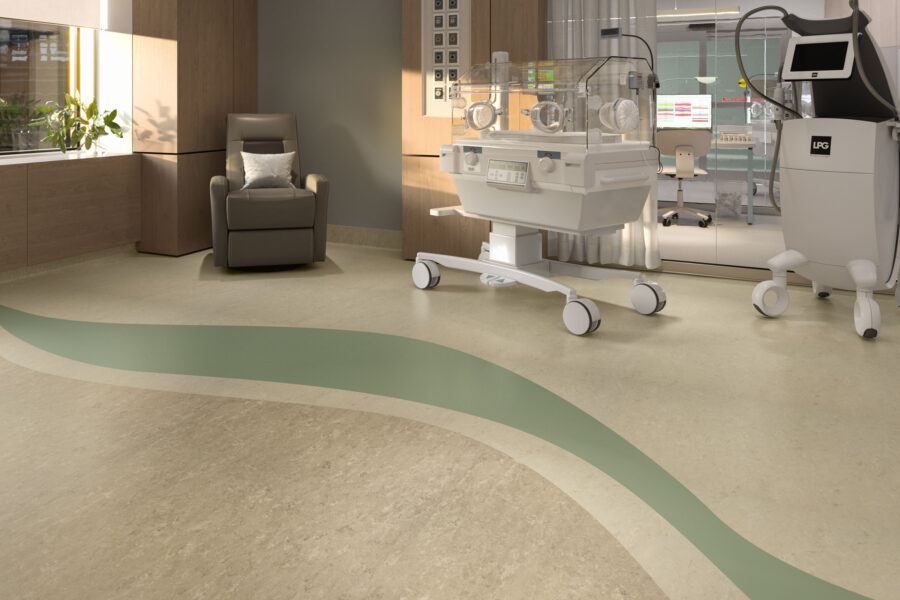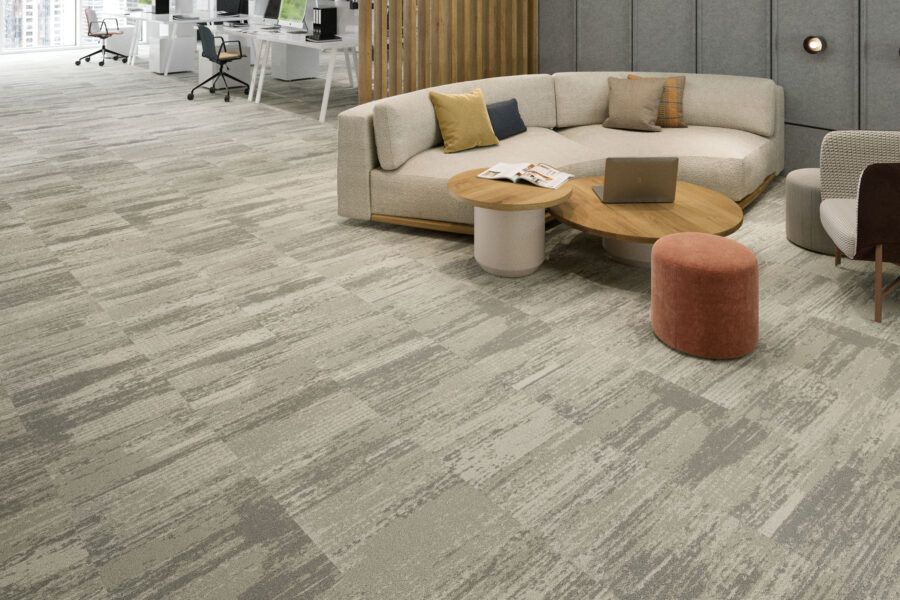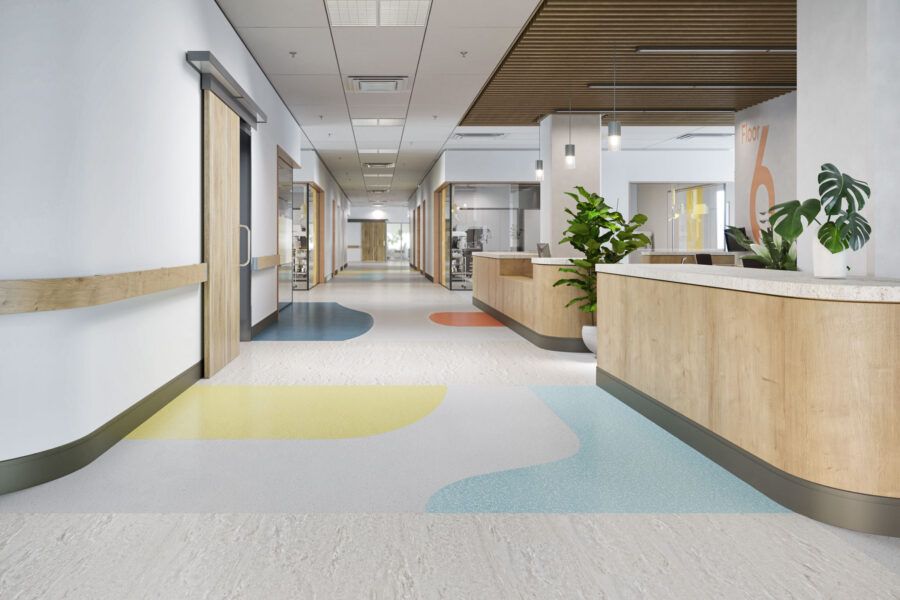Story at a glance:
- Decarbonization is becoming increasingly important in commercial builds.
- As architects and builders search for solutions like materials with a low-carbon footprint, it’s essential to look at a project’s larger sustainability goals.
- Top flooring and surfaces manufacturer Tarkett is leading the industry in providing transparency and holistic, sustainable practices.
As the world’s attention shifts toward decarbonization, many corporations are searching for partners whose business practices align with their own sustainability ambitions, and commercial builders are looking for ways to lower the carbon impacts of their projects.
And perhaps no manufacturer knows better than Tarkett that to achieve success architects and designers must take a holistic approach to decarbonization.
The flooring and surfaces manufacturer has been on the ground floor working toward a sustainable built environment for years. Since 2010 Tarkett has been a member of United Nations Global Compact—a global initiative to implement universal sustainability principles. Since 2012 Tarkett has earned the Global Compact Advanced-level reporting status; it’s the highest level of maturity—a level only about 11% of global corporations have achieved at the time of this writing.

Photo courtesy of Tarkett
In 2021 alone Tarkett used 147,000 tons of recycled materials. Thanks to its commitment to circular design, it avoided 280,000 tons of carbon along its value chain. That number is more than the climate impact of its production sites at 177,500 tons of carbon.
When it comes to decarbonization Tarkett clearly knows what it’s doing. Its products deliver lower carbon impacts throughout their life cycle, from sourcing to production through end of life recycling. Tal Fegan, senior vice president of strategic accounts and commercial business at Tarkett, also attributes the manufacturer’s decarbonization success to looking at its—and its customers’—larger sustainability impact.
“It’s really important to understand that the carbon footprint of a single product is only one indicator of sustainability,” she says. “I think the more important thing is to partner with a manufacturer who accurately, transparently communicates the action being taken on a corporate level to measure and lower their overall greenhouse gas emissions. No one organization is going to solve climate change. All stakeholders—from manufacturer to designer to end user to contractor—need to come together to make frequent, incremental change to the status quo.”
In a recent Tarkett-conducted survey 50% of 207,000 employees across six continents said they wanted more sustainable workplaces. Additionally, 44% said they also wanted more transparency from employers about the strides they are making to be more sustainable—both as a company and in the office environment.

Photo courtesy of Tarkett
It’s why Fegan and the entire Tarkett team are dedicated to setting new transparency standards. “When I put together overviews for our customers I’m always pulling in documentation of key sustainability metrics, and every year they are substantially improved,” Fegan says. “It’s not only important, but it’s so much fun for me to be able to say to a client, ‘You have this carbon emissions-reduction goal. Let me tell you how we can support it. And by the way, if you’re on this journey with us, you will see how our products will make your organization inherently more sustainable. It’s that holistic transparency we bring in support of a customer’s sustainability goals.”
And with the complexity that comes with an issue like decarbonization, that transparency is something that’s sorely lacking—both in the built environment and outside of it. Many manufacturers are not as upfront about their carbon emissions reporting practices. Commercial builders and corporations may know they need to reduce their carbon impacts but aren’t sure how to get there.
Tarkett is trying to change that. “We need to start planning for the end of life at the beginning of the process, whether that’s a manufacturer who’s developing a new product or a corporation constructing a new headquarters building. If it’s a renovation we need to start to talk about things like: What are they doing with their current flooring? Can we help them with the sustainable decommissioning of that flooring and the other materials in the space? Whether it’s our flooring or another manufacturer’s, how do we assure it’s going to be recycled? How can we keep those materials in the industrial cycle and keep them out of a landfill?” Fegan says. “It’s never a one-size-fits-all answer, and we try to understand where our customer is in the process so we can assist with what they need to succeed.”
These thoughtful conversations give all project stakeholders the necessary transparency and 30,000-foot view that empowers them to make sustainable decisions with intention—decarbonization included—that leads to better outcomes for the environment.

Photo courtesy of Tarkett
“Once we establish which flooring products and services will support our customers’ emissions reduction targets we provide customized reports detailing the actual products they’ve purchased, and we quantify how those products have contributed to their initiatives,” Fegan says.
Tarkett’s constant push for healthier, more sustainable business practices means it is always looking for new pathways for optimization around production and operations. “How is the procurement team sourcing raw materials with a lower carbon footprint? How can our products include more recycled content? Where can we innovate to lessen our impact? How do we make sure the design, performance, and sustainability of our flooring solutions exceed our customers’ project objectives not just today, but for years to come?”
With each project Tarkett’s holistic, responsible business approach begins again—a circular process not unlike the sustainable flooring products it creates.


